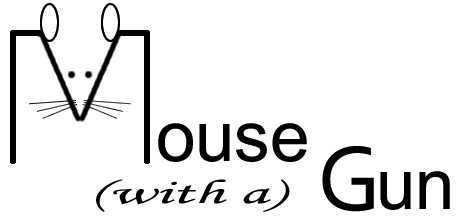"EDC" (EveryDay Carry) is a popular concept with those who want to be prepared for life's challenges: both major and minor. For some, it means always having a pen and breath mints with them, while others see it as a daily survival kit. One group of people who came out of the ruins of the World Trade Center alive on 9/11 did so because one of their number had a light, as well as a pistol that was used to break through a piece of glass that they were trapped against.
For the civilian who carries a handgun, the EDC concept can be very useful. I propose that the following be part of the "EDC" of every CCW holder, in addition to the defensive handgun:
- One extra reload in the form of a spare magazine, speedloader or Speed Strip. One of the most common causes of failure in an automatic pistol is a bad magazine. Additionally, a spare may be needed if the primary magazine is lost, either while in the holster (seat belts are notorious for ejecting magazines) or by the user accidentally ejecting the magazine in the middle of a violent encounter. A reload is also important if you ever have to fire your pistol. Many of us will have no idea how many shots we fired, or the actual number of shots will be more than we believe. In either case, you could end up waiting for the police with an empty or near-empty gun. This is a bad idea, whether in a high-crime area in the middle of the night, or near an attacker's home turf, where he and/or his friends, family or other "supporters" might show up after the incident.
- A charged cell phone. The phone might prevent the incident in the first place, if a bad guy realizes that the police are on their way, or if you or someone else is recording the events. Obviously, a cell phone can be used by you or a bystander to call the police. If you call before things "go south," you might be on the phone with a dispatcher when an attack takes place, and the recorded call may help in verifying your telling of the events. In areas that have cell call tracing, the police may find you by tracking down the location of your phone. A cell phone can also be used to photograph and/or record the faces of witnesses, license plates, vehicles, shell casings, dropped weapons, and much more while you wait for police to arrive. A video may even include a narration to help make sense of the scene, such as: "This is the gray car that forced me into the ditch. Note the streak of red paint on the front fender from my car."
- A flashlight (or two). The ways that a light may be useful on a daily basis are too numerable to list, but they include the strong possibility of helping avoid a conflict by highlighting a threat before it is close to you, by identifying an approaching person as a potential threat or a non-threat, or -- along with verbal commands -- by helping an approaching bad guy to decide that there are easier victims. A light may also help you to extricate yourself from a location before trouble happens, by helping you to find the jack in your unlighted trunk or by lighting your way back to an exit from a building. Get a bright, compact light and learn to use it with a pistol under the tutelage of a good instructor, and you'll wonder how you ever left home without it. The light doesn't have to be large. I carry an Inova X1 -- powered by one AA battery -- with a "Tiger Ring" (named for Tiger McKee). It's a rubber O-ring zip-tied to the side of the light, near the button end. My left index finger goes through the ring when it's in my hand. I can relax my fist or even open my hand without risk of losing the light, and I can gently swing it around to the back of my hand to get it completely out of the way.
- A secondary or backup weapon. This last item may be a can of pepper spray, to give you a less lethal response to someone who is escalating into a serious threat but has not yet attacked you. It could be a cane -- with which you have received self-defense training. Some carry a second handgun. For many of us, it is a knife: either a fixed blade or a folder. Regardless of the tool chosen, you need to be trained in its use for it to be effective.
The EDC concept offers a civilian with a concealed handgun a systematic approach to dealing with a wide range of situations that they may encounter. At its best, the extra tools may help you to extricate yourself from a situation without having to resort to physical force.
